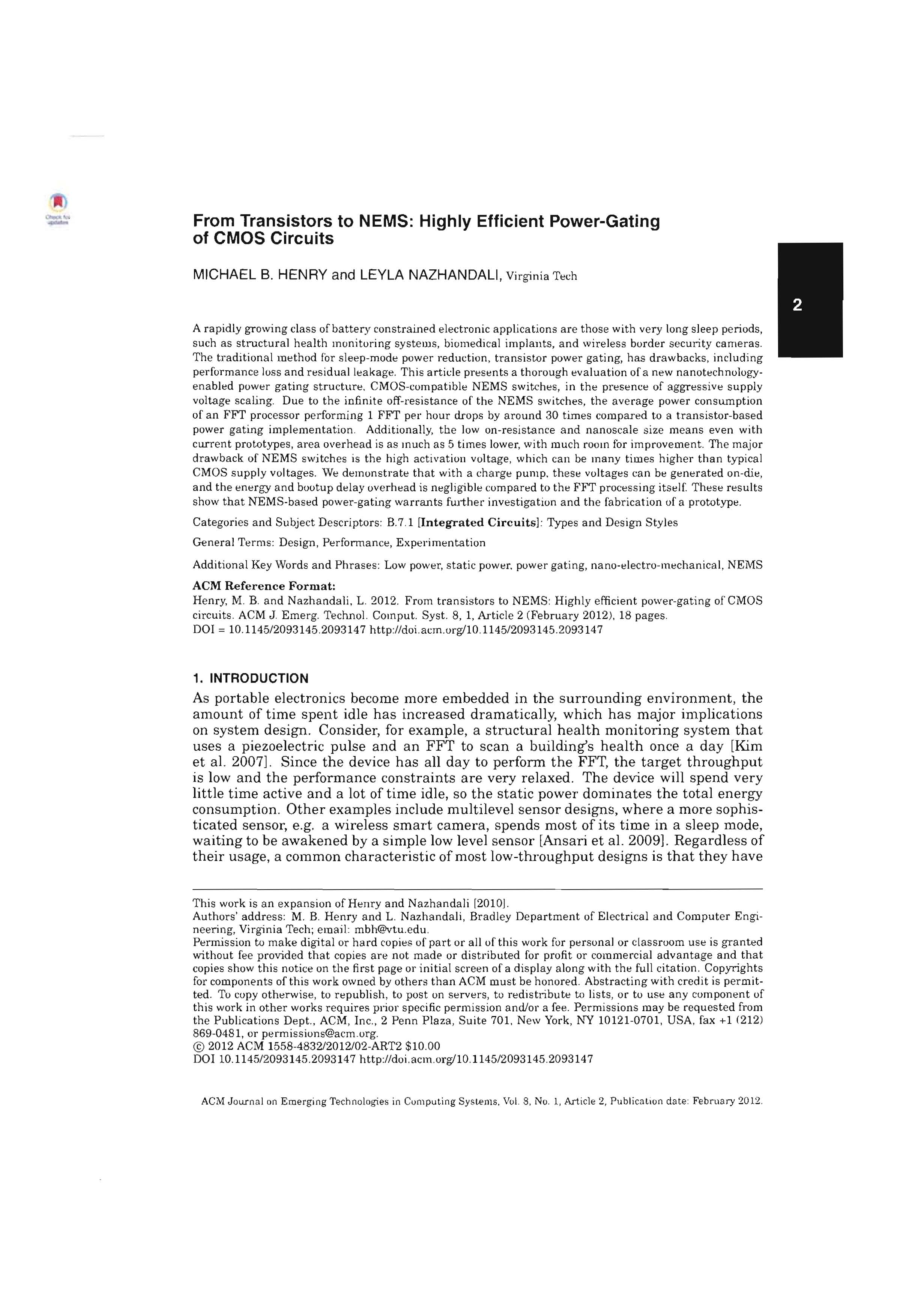From Transistors to NEMS
Highly Eficient Power-Gating of CMOS Circuits
Article Ecrit par: Henry, Michael B. ; Nazhandali, Leyla ;
Résumé: A rapidly growing class of battery constrained electronic applications are those with very long sleep periods, such as structural health monitoring systems, biomedical implants, and wireless border security cameras. The traditional method for sleep-mode power reduction, transistor power gating, has drawbacks, including performance loss and residual leakage. This article presents a thorough evaluation of a new nanotechnologyenabled power gating structure, CMOS-compatible NEMS switches, in the presence of aggressive supply voltage scaling. Due to the infinite off-resistance of the NEMS switches, the average power consumption of an FFT processor performing 1 FFT per hour drops by around 30 times compared to a transistor-based power gating implementation. Additionally, the low on-resistance and nanoscale size means even with current prototypes, area overhead is as much as 5 times lower, with much room for improvement. The major drawback of NEMS switches is the high activation voltage, which can be many times higher than typical CMOS supply voltages. We demonstrate that with a charge pump, these voltages can be generated on-die, and the energy and bootup delay overhead is negligible compared to the FFT processing itself. These results show that NEMS-based power-gating warrants further investigation and the fabrication of a prototype.
Langue:
Anglais
Thème
Informatique
Mots clés:
NEMS
Low power
power gating
static power
nano-electro-mechanical

